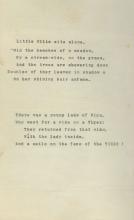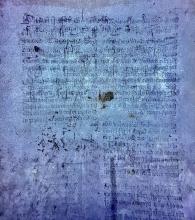Lafcadio Hearn begs "Don't disgust me, please --"
Submitted by Carolyn Vega on Thu, 03/31/2011 - 12:30pmLafcadio Hearn could be a cruel correspondent. One-eyed, diminutive, poor, and socially awkward, he was nonetheless a hit with certain ladies -- at least fifty, by his own count. One of these ladies, Ellen Freeman, emphatically did not excite reciprocal feelings.










